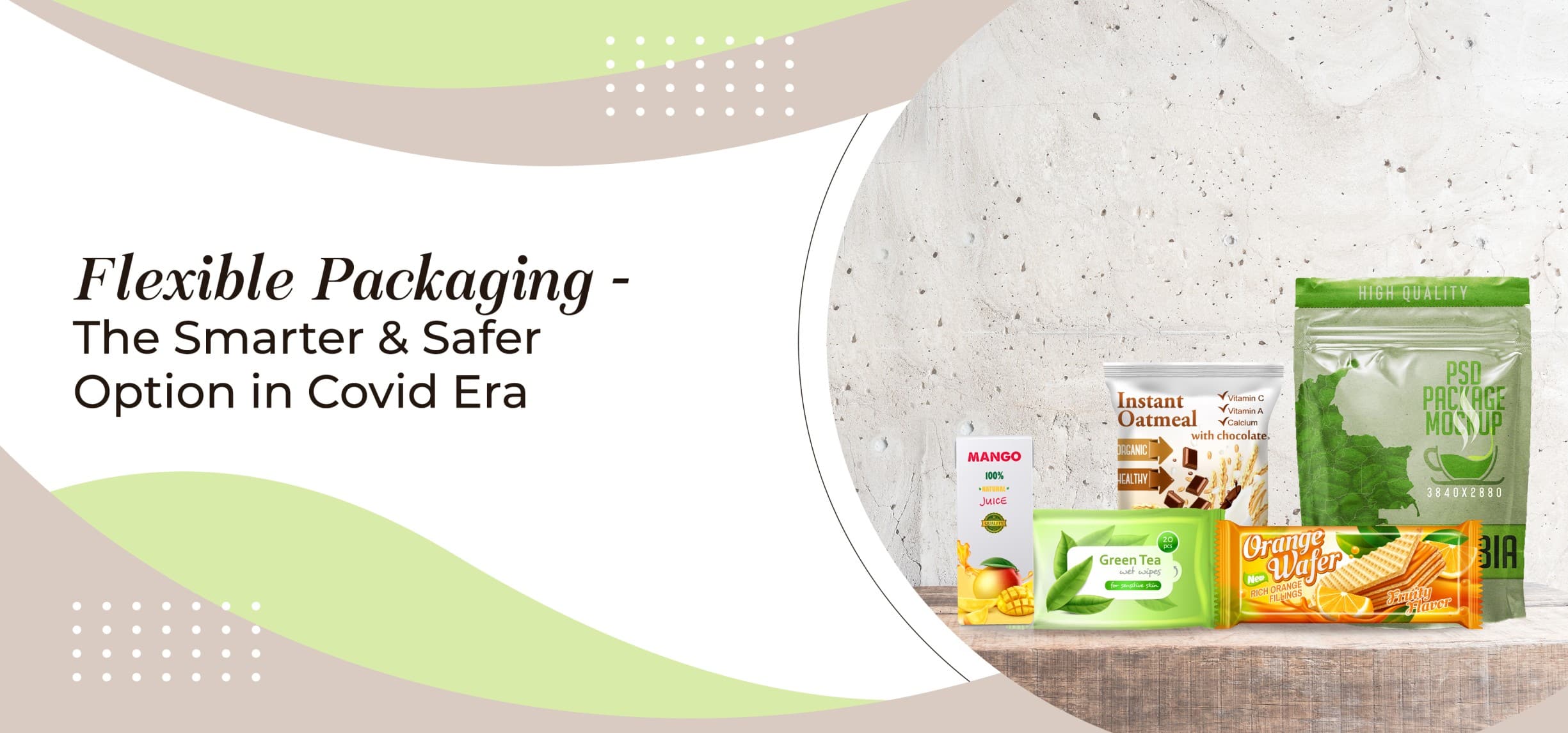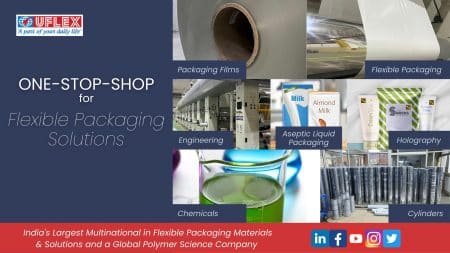Now, more than ever, when the world is undergoing a global pandemic, safety and hygiene is of utmost importance. People are hesitant to visit supermarkets and local shops like they used to do earlier and are now buying everything online from various ecommerce sites. Online shopping is not just the new norm but the only option customers have. The buying pattern of customer is changing rapidly and with this, their expectation of safety standards is best met by the quality of packaging in which they are delivered at the doorsteps. Packaging the product in a way that it reaches the customer safe, sanitized and contactless has gained importance like never before. However conventional packaging that includes glass, bottles and tins suffer from the challenges of safe transportation, inconvenient storage, barrier properties and recycling. This is where Flexible packaging steps in and plays a big role.
Flexible Packaging includes a combination of from packaging materials such as Packaging Film of various kinds, laminate, substrates, Polymers, PVC, PE, PET, PV, oxygen and barrier layers, plastic and paper at times to make pouches, bags and other pliable enclosures depending upon the ingredients to be packed within. Flexible Packaging offers versatile packaging styles and is useful for a wide variety of products like medicines, food, beverage, personal care, cosmetics etc.
Flexible Packaging looks beyond the normal factors of price and convenience and focuses on sensitive and crucial areas such as eco-friendliness & sustainability. With these advantages brands and manufacturers have adopted Flexible Packaging to meet their sustainability goals. It also prevents from environment getting affected, thereby reinstating the virtue of plastic in the economy but out of the environment which makes Flexible Packaging a smarter and safer option for all in this ongoing pandemic.
1. Direct Contact of Consumables With Packaging
Studies show that one of the major fears among customers is the fear of contracting COVID via Food Packaging. New and improved packaging is required so that the consumer is free from directly engaging with the packaging of the product. Special care needs to be taken for products that fall into the personal care category like toothpaste, creams etc. where the customer directly engages with the packaging. It is even so for food and drinks where the customer has to consume the product by bringing it close to their mouths.
Flexible Packaging allows for packaging in a way that the customer can avoid any direct contact with the outer package. The inside layer of the packaging which is close to Packaging Film is specially treated or is sterile so that the consumables remain unaffected not just with the external environment but also with the packaging. It is a safe and smart way to package items.
2. Made of Materials That Restrict Virus Viability
Researches done at the start of the pandemic state that the virus remains for around 24-72 hours on a particular surface depending on the material it is made out of. This completely changes the packaging game. This means that only materials that restrict virus viability should be used by businesses. Flexible Packaging allows for various material choices that are safe and prevent virus viability.
3. Damage-Proof Packaging
Flexible Packaging allows for high protection of products. Packages are free from cut, tear, wear-off, rust etc. This prevents any outer factor like moisture, dirt or virus to come in contact with the product. Rigid packaging often has the problem of getting damaged from the corners which is not at all an issue in flexible packaging.
4. Sustainability
Pouches, paper containers, foils etc are made with no or minimal harm done to the environment. The green-house gas emission rate in packaging materials is really low. When it comes to increasing the safety of any product, most businesses resort to a multi-layer approach to avoid any damage. Flexible Packaging is safe and sustainable and keeps the environment safe by keeping the emissions below specified standards without compromising on packaging quality. Not just this, Flexible Packaging provides benefits of ease of storage, re-sealability, reusability and also increases shelf life of the product by and allowing consumers to store the product in the packaging itself without a need to empty it out in containers.
This pandemic requires caution and care in every aspect of life and packaging has a much bigger role than what one can look from a distance. Not just during the ongoing COVID times but also post-pandemic as well. It is a smart choice to use Flexible Packaging. Businesses that opt for Flexible Packaging easily provide safety, sustainability, ease and style to their customers without while simultaneously enjoying economies of scale.




